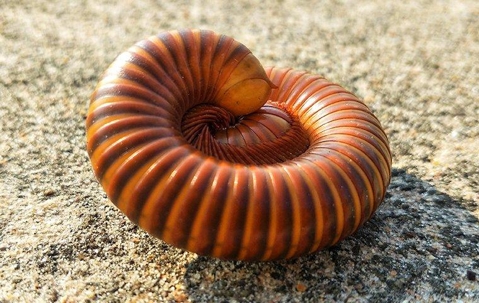Are you having trouble with centipedes or millipedes? While these two pests couldn't be more different, they often fall into the same pest category for two reasons: They are the only two pests that have fifteen pairs of legs or more, and both of these pests are attracted to moist conditions. Let's take a look at the role moisture plays in keeping centipedes and millipedes out of McKinney homes—along with a few other helpful tips.
Moisture Pests
Centipedes and millipedes are considered moisture pests. What is a moisture pest? It is a pest that is drawn to damp perimeters around homes and conditions that cause moisture to develop, such as leaf piles, grass piles, dense vegetation, clogged gutters, and more. If your perimeter is damp, you're going to have issues with more than just centipedes and millipedes. Some moisture pests are destructive to wood, such as termites, carpenter ants, powderpost beetles, mice, and rats. When you address moist conditions around your home, you reduce and repel centipedes and millipedes and make your home less attractive to wood-destroying pests.
Exterior Moisture
Oversaturation can lead to many issues, such as wood rot, decaying plants, and an increase in algae, mold, and fungi. All of these invite millipedes and centipedes to your home. If you're wondering why you have hundreds of millipedes crawling around on the outside of your home, or centipedes crawling around on the inside, it is likely that you have a moisture problem.
Interior Moisture
Few homes are humid or damp enough to allow millipedes to survive for long. When millipedes get into your McKinney home, they're probably going to die and leave a mess for you to clean up. Centipedes, on the other hand, will do quite well in a home, especially when humidity is not controlled. Here are some examples:
- Not using a bathroom fan when you take a shower or bath.
- Leaving bathwater in a tub between uses; this is common with jetted tubs.
- Not addressing leaky faucets.
- Allowing a garbage disposal leak to go unfixed.
- Not addressing dampness in a basement or cellar.
Entry Points
Another way centipedes and millipedes get into McKinney home is that they find an entry point. There are many potential entry points these pests will take advantage of.
- Improper seals around exterior doors
- Damaged screens
- Holes created by carpenter ants and other pests
- Cracks in foundation walls
- Gaps around pipes and other foundation penetrations
DIY Millipede And Centipede Control
These two pests can be significantly controlled by reducing moist conditions inside and outside of your home, and by reducing the number of entry points they can stumble across. But these do not work as pest control. When you keep having trouble with millipedes or centipedes, you may turn to over-the-counter pest control products. Keep in mind that these products can be far more of a threat to you than these bugs. Toxic chemicals can make you very sick. But what happens more often is that these products don't achieve the results a homeowner is looking for and they end up wasting money and having to turn around and spend more money to have a professional take care of the problem. We recommend calling a professional first. It can save you money and misery.
How Adams Exterminating Company Can Help
We are always here to answer your questions and provide effective pest control as needed. You don't have to go it alone. Contact Adams Exterminating Company for a one-time service or ongoing residential pest control. Millipedes and house centipedes do not present a threat to your health or property, but there are many pests that do. Reach out to us at any time. We're standing by to assist you.

